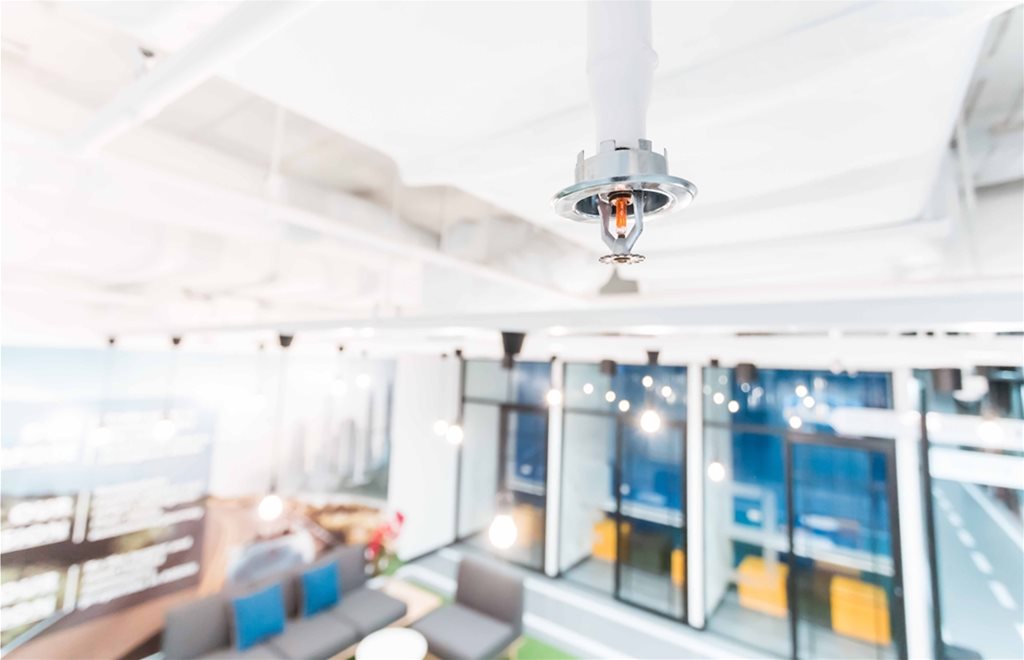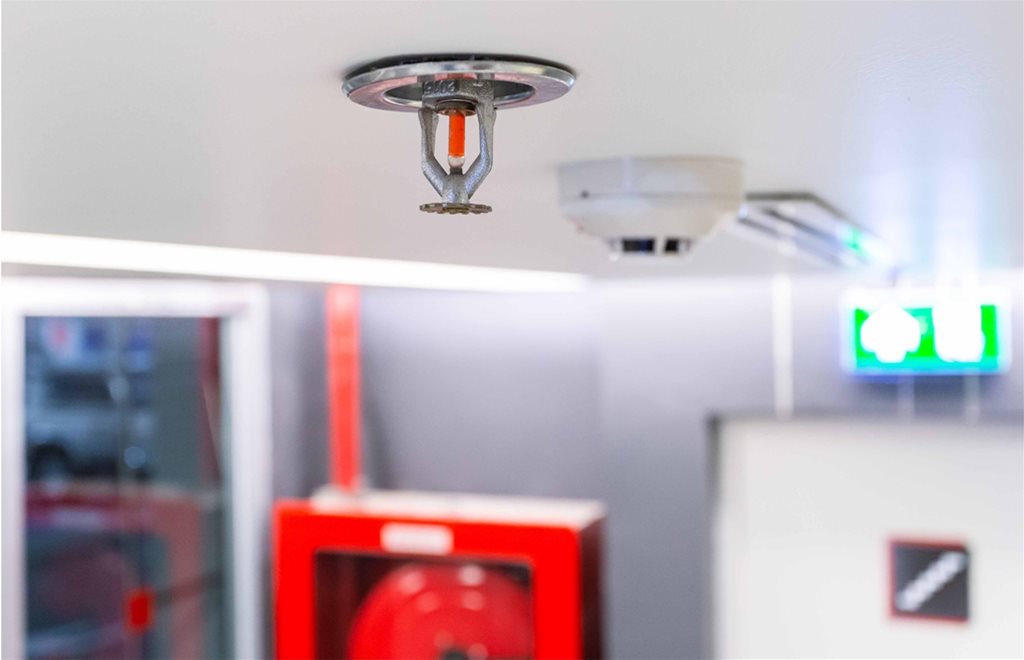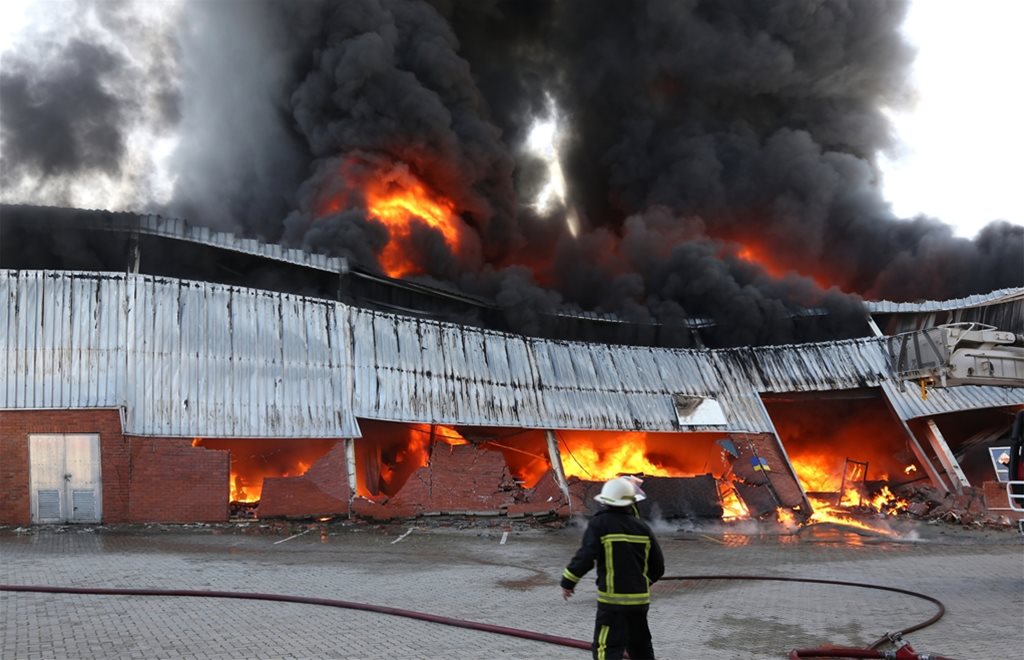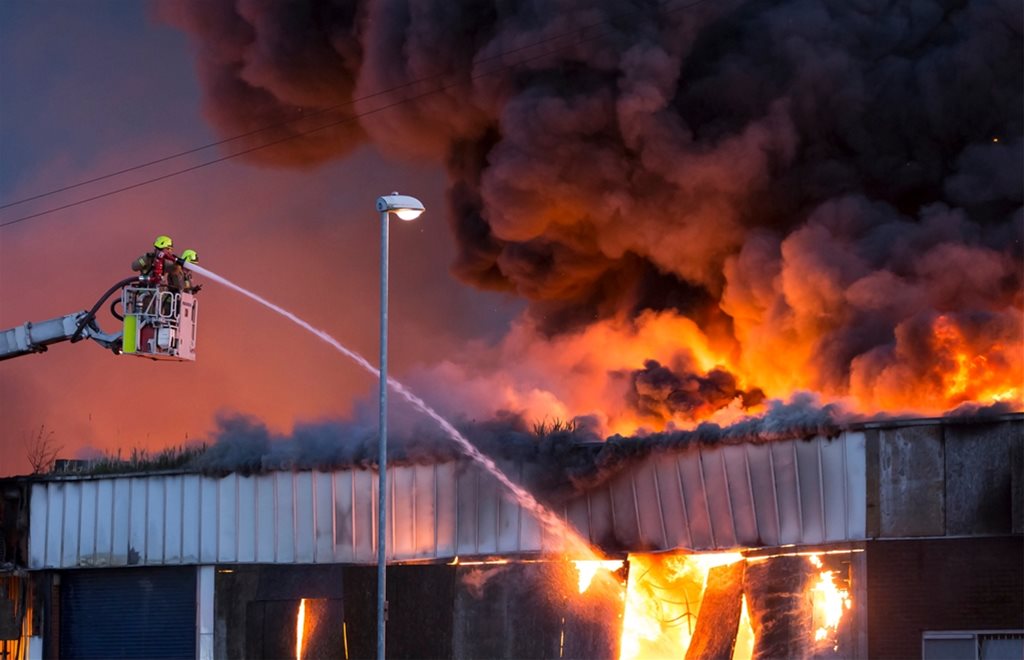Tom Roche asks why UK businesses continue to ignore the myriad costs of fires, and so many buildings still lack appropriate fire protection
FROM A business perspective, the COVID-19 pandemic has highlighted how interconnected supply chains are faring and the need for them to adapt. This interconnectivity has implications when you look at fire, and it becomes evident that fire has far reaching consequences – way beyond the direct impacts on the building and its occupants.
The plain fact is that fire has a long lasting impact on businesses and communities, so with the UK facing lasting economic uncertainty in the wake of both COVID-19 and Brexit, can businesses afford not to protect themselves against it?
Complex problem
Whilst we would like to think of fires as neatly packaged events, they rarely are. They are messy and perhaps more likely than people think. When a fire happens in a single home, it may result in one family being displaced, but its impact on people living together is much greater. The same argument can be made for our schools, hotels, care homes and hospitals as well as commercial and industrial buildings.
Understandably, the business news headlines continue to feature COVID-19 and Brexit: however, fires are still a threat. They start in businesses across the country every day and the costs to UK plc – to both private enterprise and the public purse – continue to rise. Fire is the leading cause of commercial property loss. For example, the Association of British Insurers (ABI) has noted that UK businesses made fire property claims of £940m in 2018 as a result of a blaze. And let’s be clear – that was what was covered by insurance, but not everything will be.
These fires have economic, social and environmental costs that go beyond individual businesses, and these losses are avoidable. It is why risk aware businesses understand the importance of physical resilience and recognise the need for effective methods to protect their property, such as the use of an appropriately designed and installed sprinkler system.

Costly damage
That £940m figure for fire claims in industrial and commercial properties is for one year alone. It brings home the fact that fires are costly. However this is one view of fire and, over time, action has been taken to understand the measurable cost of fires to the nation. The analysis by the government has broadly been broken down into three areas: cost in anticipation, cost as a consequence and cost as a response. By understanding these costs to the economy as a whole, it becomes clear that the expense of installing sprinklers represents a small fraction of the overall cost of fire to the economy.
Firstly, costs in anticipation refer to those for structural and passive fire protection, as well as other measures to prevent or mitigate damage caused by fires. Sprinkler installations fall within this category, and their costs can often be offset to an extent by balancing other anticipatory measures.
Secondly, costs as a consequence are those that are incurred due to exposure of a property, an individual or the environment to a fire and its damages. These costs are borne across the board, from individuals to private firms and society. The last study by government in 2008 put a figure on that cost of £3.285bn, and there is no reason to believe this has done anything but rise since that time.
Thirdly, costs in response are those resulting from extinguishing and clearing up in the event of a fire, with the public sector bearing the majority of these. Home Office figures report that there have been more than 22,000 fires in industrial and commercial buildings (ICBs) in the past three years, while the ABI indicates that property claims arising from fires in commercial properties are close to £1bn per year.
However, recent research by the Centre for Economics and Business Research has shown that each year, fires in warehouses alone (which are only 15% of ICB stock) cause a direct financial loss to business of £230m per year; cause a loss of £190m per year in gross domestic product through lost productivity; create impacts up and down the supply chain; lose the Treasury £32m in tax receipts; and are the cause of 1,000 job losses.
So the costs of fires in industrial and commercial buildings go far beyond the measurable costs and impacts on individual businesses and insured costs. Fires are the cause of significant economic, environmental and community costs, which are ultimately borne by the taxpayer.

Environmental costs
The environmental impact of fires in ICBs is usually all too evident. In addition to the contaminants in the smoke generated by fires, a study by Bureau Veritas has calculated that up to 350,000 tonnes of CO2 a year are emitted because of fires in ICBs. Furthermore, the same study has calculated that more than 9bn litres of water a year are needlessly used by UK fire and rescue services (FRSs) to extinguish fires in ICBs. That is equivalent to the daily water use of 15m UK households.
This vast amount of water could be avoided if the buildings were fitted with sprinkler systems. Moreover, this use of water is of particular concern at times of drought and puts extreme pressure on local water systems – often leading to infrastructure damage that requires repair, and thus impacting on supplies both to other businesses and local residential properties.
While the impact cannot be precisely quantified, the smoke and emissions generated from a fire are pollutants which lower the quality of the air that we breathe. Fire water run off can contaminate watercourses in certain situations when buildings contain pollutants, and is costly to treat. Furthermore, there is significant unnecessary waste and use of resources to rebuild destroyed property.

Change outcomes
In light of the overwhelming and far ranging costs that fires have on business, there is a need to consider action to change the outcome. The most efficient and effective way to reduce the effects of fires in the commercial sector is to ensure that when they start, they are quickly extinguished, so that damage is minimised.
Sprinklers do just this – they make buildings and businesses resilient to the impact of fire because they automatically control or even put out flames before the FRS arrives. Not only is this much safer for the firefighters, but the business can be up and running again, usually within hours of the incident. Those without such protection can see five to six times the damage and can suffer much longer spells of interruption.
When sprinkler systems operate, in 99% of cases1 they control or extinguish fires, and are therefore a small price to pay to prevent the hard earned success of a business from going up in flames
Tom Roche is assistant vice president and senior consultant in the international codes and standards group at FM Global

Reference
- Efficiency and Effectiveness of Sprinkler Systems in the United Kingdom: An Analysis from Fire Service Data, Optimal Electronics, May 2017.